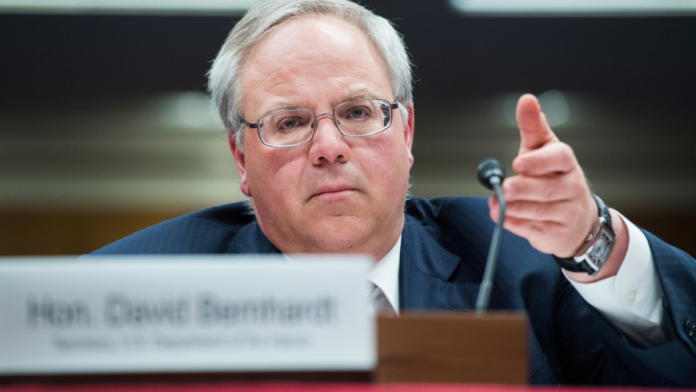The head of the Interior Department defended the relocation of the Bureau of Land Management headquarters to western Colorado and confirmed the agency was “on track” to deliver on public land management needs this week.
Interior Secretary David Bernhardt described the enthusiasm of field workers in response to the 2019 move for BLM’s headquarters. He touted the caliber of applicants seeking to join the agency in Colorado and across the West in light of the relocation and agency’s reorganization that began in 2017 under his predecessor, Ryan Zinke.
The hearing in the U.S. Senate Committee on Energy & Natural Resources this week also reviewed the proposed budget for the Department of the Interior for Fiscal Year 2021.
“Secretary Bernhardt, I want to start by saying thank you for the Interior Department’s commitment to Colorado priorities,” said U.S. Sen. Cory Gardner (R-Colo.). “Yesterday, I introduced the Great American Outdoors Act to provide full and permanent funding for the Land and Water Conservation Fund, which is a historic opportunity for conservation and environmental protection, and it wouldn’t be possible without the support from the Administration.”
“I look forward to this chamber’s bipartisan passage as quickly as possible,” Gardner said.
Gardner added his gratitude for the relocation of the Bureau of Land Management’s headquarters to Grand Junction, Colo. in 2019 so Americans “can have the decision makers grounded in the communities where those decisions have the most impact and the most effect.”
“If the BLM was headquartered out West, you would understand why so many county commissioners had a challenge or problem or questions,” Gardner said, referring to a conversation with BLM staff years earlier under the Obama administration. This will make a “crucial difference” for western states, he continued.
Bernhardt confirmed the relocation was on track and that the agency was taking applications for open positions. He told the Senate Interior and Environment Appropriations Subcommittee last week that about 45 percent of BLM employees have agreed to relocate, with others retiring or taking other jobs within the Interior Department, and was committed to “taking care” of those seeking positions elsewhere in the department, or within the federal government overall.
In contrast to those wishing to remain behind, Bernhardt said the quality and quantity of applicants for positions in the new Colorado headquarters and throughout the west were “through the roof” compared to applicants for D.C.-based positions.
In his comments, Gardner said that cost-benefit analysis would demonstrate the wisdom of the move, as dollars are spent more effectively “by having those public land managers, the head of the agency, the headquarters, in the western United States.”Gardner pointed to other federal agencies located outside the Beltway, including the Environmental Protection Agency, National Oceanographic and Atmospheric Administration, and Centers for Disease Control, which have large operations outside Washington, D.C.
“They all do incredible work and I believe they are more responsive to the communities they serve because they are out of Washington, D.C.,” he added.
“I think the people who are most thrilled about this [BLM relocation],” Bernhardt responded, “are our folks in BLM in the field.”
The enthusiasm for the reorganization and relocation, according to the Interior head, is immediately understood.
“When I walk into a field office and start talking about this, they immediately start clapping,” Bernhardt said.
Last week, a Government Accountability Office report delivered to U.S. Rep. Raul Grijalva (D-Ariz.), chairman of the House Committee on Natural Resources, concluded that BLM’s reorganization analysis was incomplete.
“Based on documents we reviewed, BLM considered some costs and benefits of the reorganization, but its analyses did not include complete information on assumptions, methodology, and relevant costs,” GAO auditors wrote. Grijalva requested the report in 2019.
BLM’s new headquarters oversees nearly 250 million acres of federally managed land across the nation, centered among 12 western states including Colorado, Utah, New Mexico, and Wyoming.
According to E&ENews, GAO officials plan to continue their audit of BLM’s plans moving forward.

